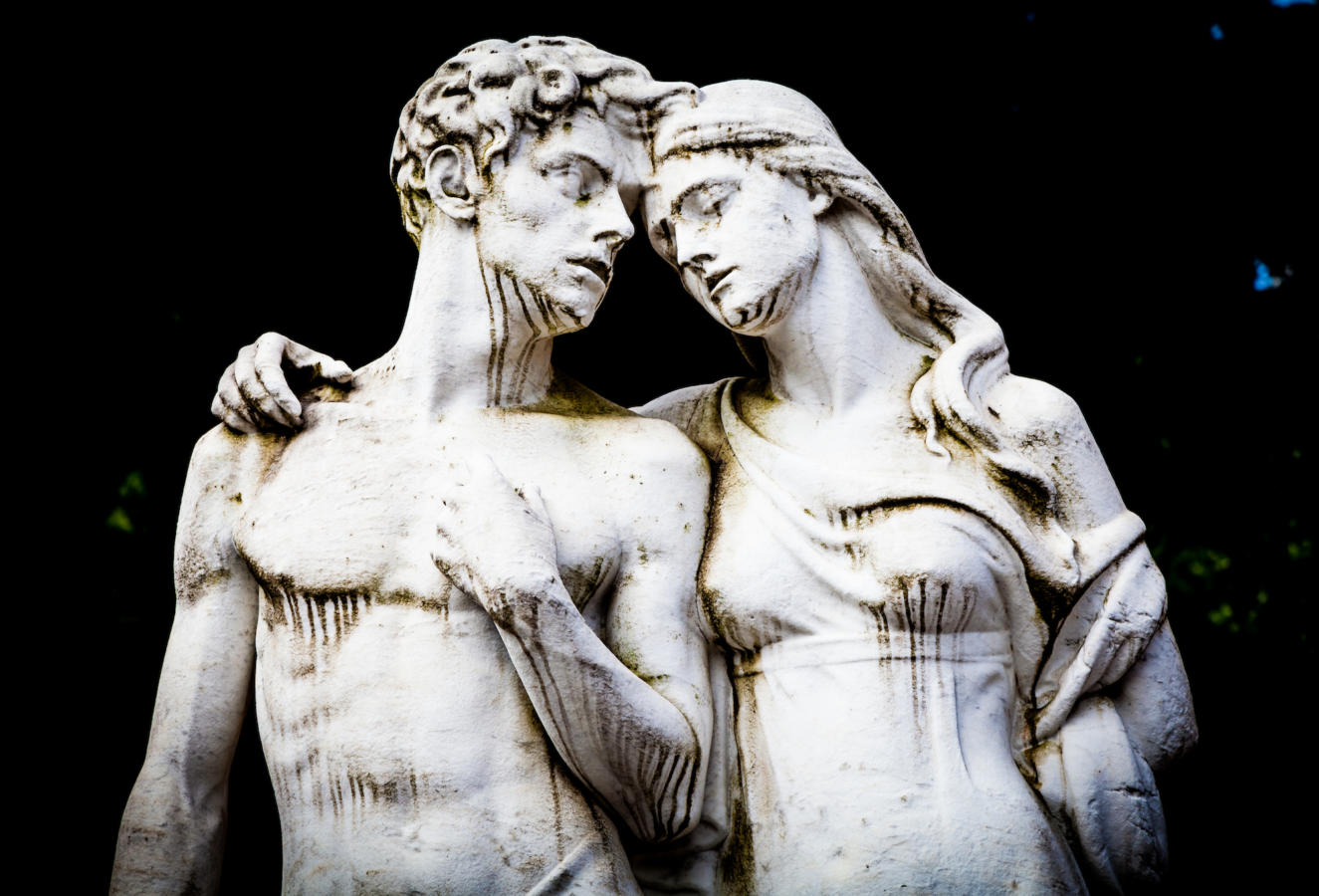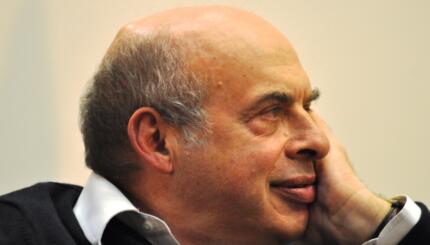On October 20, 1918, Harry Rosenberg and Fanny Jacobs stood together in a cemetery near Cobb’s Creek. They didn’t know each other, and the main qualities they had in common were a lack of wealth and a desire to save their community. With an audience of 1,200 Russian Jewish immigrants, they wed.
Harry and Fanny were participating in a shvartze khasene (שוואַרץ חתונה, “black wedding”). An Eastern European superstition, brought from the old country, held that marrying in a cemetery would protect the local Jewish community from tragedy. While Russian and Polish traditions differed, the main idea was that the graveside wedding would appeal to the dead, who could intercede on the living’s behalf. Additionally, it was hoped that the sad sight of poor, young strangers marrying in a desolate location would induce God to have pity on the couple, and thus halt the spread of disease.
This obscure tradition was practiced widely during a cholera epidemic in Poland in 1892, but when Jews from Eastern Europe immigrated to the United States around the turn of the 20th century, just in time for another epidemic (the Spanish flu) they brought this custom with them. There are records of two such weddings in Philadelphia and a third in New York City during the 1918 epidemic, but more may have been conducted elsewhere.
At the time of Harry and Fanny’s wedding in the fall of 1918, the Spanish flu epidemic was at its peak. In Philadelphia, nearly 700,000 lives had been claimed. Public gatherings were banned while social groups, including synagogue congregations, donated time and supplies. In an atmosphere of desperation, a handful of Jewish couples hoped this tradition from the “old country” might make a difference.
With your help, My Jewish Learning can provide endless opportunities for learning, connection and discovery.
If this seems strange or superstitious to us, it did also to some Jewish onlookers in 1918. The following is an opinion piece that ran in The Jewish Exponent on the Friday following Harry and Fanny’s wedding:
The wedding held in a Jewish cemetery last Sunday for the purpose of staying the ravages of the epidemic was a most deplorable exhibition of benighted superstition. We are told that the custom originated in Russia. It and the participants should have been permitted to remain there. Unfortunately the publicity given to the occurrence will convey to many people that this is a custom sanctioned and encouraged by the Jewish religion. The people who do such things do not know what Judaism means.
By 1918, around one million immigrants had arrived in Philadelphia, and those who stayed in the city primarily lived in tight-knit communities with other immigrants. By the mid-1920s, over two million Eastern European Jewish immigrants had immigrated to the United States, where they encountered pushback to their previously-insular way of life. Surrounded by the patriotism of WWI, pressures to acculturate, and the constant striving towards the American dream, immigrants struggled to balance Jewish and American cultures. The pressure of an epidemic magnified this challenge.
One month later, on November 15, 1918, The Jewish Exponent announced another shvartzse khasene and was well-received by the Jewish community of New York City:
In a Mount Hebron Cemetery Miss Rose Schwartz, No. 369 East Tenth street, stood beside Abraham Lachterman, No. 638 East Eleventh street, the other afternoon, and before them stood rabbi Unger, who performed a marriage ceremony.
The tradition on which the couple acted is one which declares that the only way to stop a plague is to hold a marriage ceremony in a cemetery.
When Miss Schwartz and Lachterman consented to offer themselves to stop the influenza epidemic, the neighbors were so grateful that they provided food, taxicabs, a wedding gown and even the furnishings for a flat. Two thousand persons cheered the courageous pair as they started for the cemetery.
Interestingly, the tradition of the shvartze khasene itself is the product of a different process of acculturation; Hanna Węgrzynek traces the religious and social influences of the black wedding to include elements of Slavic culture, Christian ritual, and Kabbalah.
At its center, this ritual relies on the Hasidic belief in frequent interaction between the earthly and supernatural realms, particularly surrounding weddings. Brides are believed to be susceptible to both favorable divine intervention and harmful demonic possession, leading to one custom requiring the bride and groom to never be left alone in the week before the wedding. Additionally, one method of attempting to cure young women of disease was to drape her in a wedding gown.
Marriage plays a central role in Kabbalah which views the world as infused with male and female aspects. When these opposed aspects come together, it is symbolized as a heterosexual marriage. The most well-known example of this is the song Lecha Dodi, sung on Friday nights and meant to invoke Shabbat as the bride of the Jewish people.
In Eastern Europe, where Jews had migrated after the thirteenth century, these traditions mixed with local Slavic, Catholic, and Orthodox Christian customs, many of which involve cemeteries. One Easter ritual with pagan origins involves placing eggs on gravestones, and before the All Saints’ Day feast, residents of a town would often meet at a cemetery with food to invite departed souls to the festivities. In some areas, Orthodox Christians would hold feasts with hot, steaming food in cemeteries four times a year, often with drinking and dancing.
The connections between these Kabbalistic beliefs and Slavic, Christian traditions are not straightforward. Instead, they point to an ever-shifting relationship between each Jewish community and their neighbors. Each ritual reveals unconscious influences, deliberate choices, and blurred lines between each group — a foreshadowing of the much more involved interactions that Eastern European Jews would encounter in the United States.
It is important to note that the shvartze khasene existed alongside other, more distinctly Jewish traditions to ward off disease. For example, many Polish Jews placed signs over their gates saying “Typhus has already reigned here” or “Nobody is inside.” This calls to mind the instruction during the ancient Israelites’ exodus from Egypt to put lamb’s blood on their doorposts so their firstborn son is not killed (Exodus 12:13). It also parallels the Jewish folk tradition of changing the name of a critically ill person in order to confuse the Angel of Death.
Harry and Fanny made a major sacrifice in trying to use their marriage towards a greater good. It may have been the ultimate sacrifice: genealogical research brought up little besides their marriage certificate, suggesting that both Harry and Fanny may have succumbed to the Spanish flu themselves. At the very least, I imagine them saying: “So many people have already died; how could this hurt?”
All in all, the epidemic finally came to an end by summer 1919 — but how much the black weddings contributed to that is not for me to decide.



